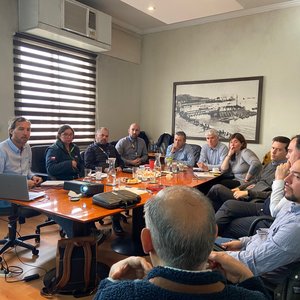Frank v. Sean
There has been a great deal of discussion in recent weeks as to the pro’s and cons of GM salmon but if there is just one thing that may persuade the undecided to favour the introduction of these fish then it is the news that the Governor of Alaska, Sean Parnell, has written to the FDA Commissioner to express his opposition.
Mr Parnell wrote that he was troubled by a lack of transparency in the process. Well if anyone should know about a lack of transparency it is Mr Parnell as he oversees a State that markets its salmon as wild when clearly, the majority are anything but. A report from the McDowell Group (no relation) found that at least 30% of the fish sold as Wild Alaskan are in fact farmed in hatcheries. Twenty five percent of the total harvest is Pink salmon that have been hatchery raised and the figure rises to 54% of the Pink harvest.
On the basis that many European consumers buy wild Alaskan salmon only because they have been told by the environmental lobby that hatchery/farmed salmon are unsustainable, these consumers are being clearly misled. The Alaskan salmon industry and Mr Parnell are thus unqualified to contribute to the debate, especially as the State of Alaska has confirmed that they will have nothing to do with aquaculture (unless it’s called enhancement).
Aqua Bounty would probably argue that all they are doing is enhancing salmon with a little genetic manipulation. Like many of those against GM salmon, Mr Parnell argues that GM salmon could spread disease, cross breed with wild fish and out-compete them for food and mates. None of these are really likely at all.
In making such claims, the anti-GM salmon lobby have missed the main point of this debate. It has nothing to do with salmon at all but rather do we want to eat GM livestock? The argument should really be about GM beef, pork or poultry because these are the animals that really matter in terms of mass food production.
Sadly, Aqua Bounty has brought the debate to the salmon industry instead, whether we like it or not. Presumably it has been easier to work on cold blooded salmon than warm blooded farm animals, which is why GM salmon has now become the focus of the world’s press.
The danger for the salmon industry is that the negative press will deter consumers from buying salmon at all because of the possibility that the fish they eat could be GM. This is clearly the same concern that Mr Parnell has because his wild State’s salmon will be tarred with the same brush.
The salmon industry doesn’t want to be at the forefront of this fight. This is a fight that should be fought elsewhere and when the battle is decided, then salmon might be considered.
Aqua Bounty has a lot to answer for. Their technology may be fantastic but this is a battle that should be fought on a different front, especially as the industry is unlikely to adopt the technology even if it is approved.
The above commentary is excerpted from reLAKSation 471 by Callander McDowell. Read more.










